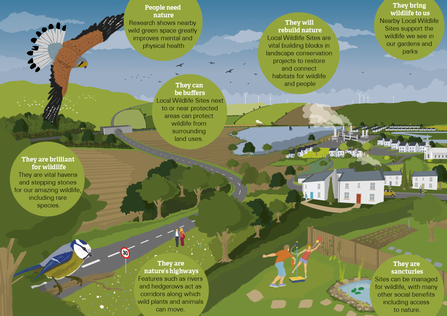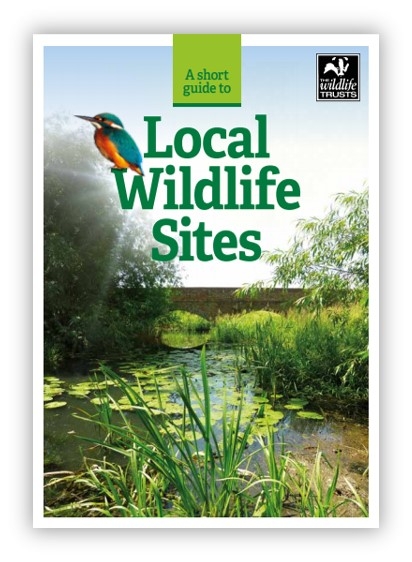What are Local Wildlife Sites?
Local Wildlife Sites are areas of land that are especially important for their wildlife. They are some of our most valuable wildlife areas. Local Wildlife Sites are identified and selected locally using scientifically-determined criteria and surveys. They are corridors for wildlife, forming key components of ecological networks. The Wildlife Trusts have worked with local authorities, statutory agencies, landowners and other local partners to establish effective systems for identifying, managing and monitoring Local Wildlife Sites.
Local Wildlife Sites are identified and selected locally using robust, scientifically-determined criteria and detailed ecological surveys. As a result, these special and often secret spaces have a huge part to play in the natural green fabric of our towns and countryside. They make up a web of stepping stones and corridors for wildlife, forming key components of ecological networks. Read our short guide to Local Wildlife Sites to find out more.
What state are they in?
One of the main problems is we just don't know what condition most Local Wildlife Sites are in. Every few years The Wildlife Trusts produce a report on the Local Wildlife Sites in England. The most recent report shows that we only have information about the condition of 15% of Sites. The majority were not reported on, and may not even have been monitored.
For Sites we do know were monitored, we found that 12% had been lost or damaged - this could be anything from the destruction of the whole site to a decline in habitat or loss of species.
Development can be a threat to Local Wildlife Sites, but our report shows that most Local Wildlife Site partnerships consider lack of management the greatest threat. In most cases this is due to a lack of resources. Sites are designated for special features, and with the wrong management (or none at all) these features can easily be lost.
Why do Local Wildlife Sites matter?

Who treasures and takes care of these places?
For more than 45 years, The Wildlife Trusts have worked with local authorities, statutory agencies, landowners and other local partners to establish effective systems for identifying, managing and monitoring Local Wildlife Sites. Within these partnerships, we often play a significant role in advising and supporting site owners. Local Wildlife Sites are often privately owned and so rely on the sheer commitment of the landowners, farmers and volunteers who are prepared to carry out sensitive habitat management. Without such care and effort, a site will gradually decline.
These sites are named differently across the UK
- England Local Wildlife Site
- Isle of Man Manx Wildlife Site
- Northern Ireland Site of Local Nature Conservation Importance
- Scotland Local Nature Conservation Site
- Wales Site of Importance for Nature Conservation
There can be local variations too eg: County Wildlife Site, SINC, Site of Nature Conservation Importance.
Read our short guide to Local Wildlife Sites

Local Wildlife Site short guide
Read our short guide to Local Wildlife Sites - explains what they are, why they're important, the challenges facing them and more.
What you can do to help
- Do you own or manage a piece of land listed as a Local Wildlife Site? Contact your local Wildlife Trust. They can offer advice or point you in the right direction for help with surveys and Management options.
- Get involved by becoming a volunteer to help look after Local Wildlife Sites
- Ask your local Wildlife Trust where to find Local Wildlife Sites open to the public near you. Get to know and enjoy them.
